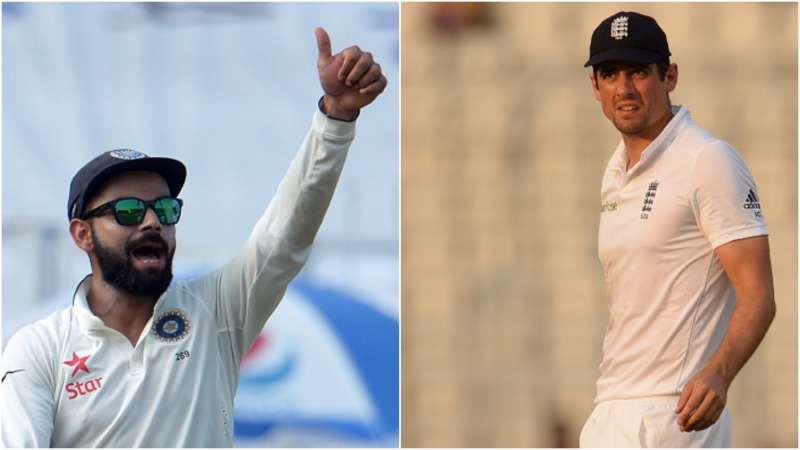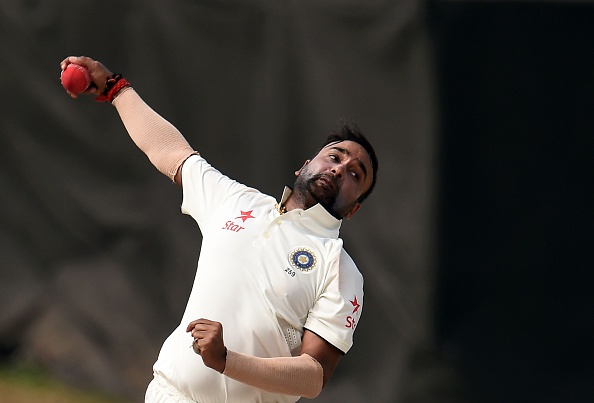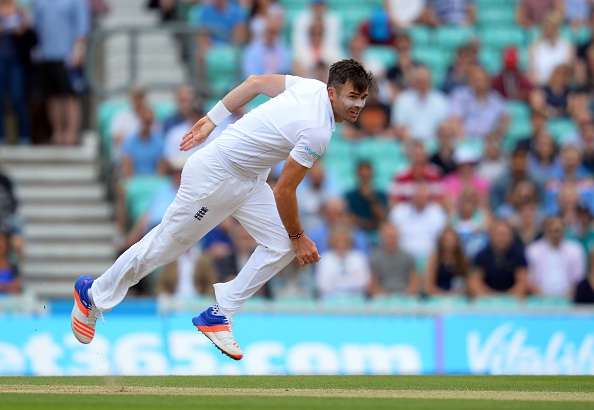
India vs England: A comparison of two fine Test teams

England have arrived in India to contest in a five-match Test series for the first time since 1984-85. They have no warm-up matches scheduled and will be without their premier fast bowler James Anderson for the first Test in Rajkot, preparations for which have begun in full swing from both sides.
Virat Kohli is on a high after three successive Test series victories, two of which came away from home, whereas Alastair Cook just saw off a loss against Bangladesh in Dhaka and a narrow win in Chittagong, where merely 22 runs separated Bangladesh from victory.
Also Read: India vs England 2016: Ravichandran Ashwin looking forward to duel with Alastair Cook
It will be the first time in Kohli’s nearly two-year captaincy tenure that he will be leading his side against England, while Cook prepares to return with his troops to Indian shores, the place where his Test leadership career officially began in 2012, his only previous captaincy experience then, being a brace of Tests in Bangladesh in 2010, when Andrew Strauss was rested.
As the leader this time, Kohli has the opportunity to heal his wounded reputation against England, against whom he averages a lowly 20.13 after nine Tests; and the only occasion when he has stepped onto English soil saw his persistent weakness against seam movement and swing on tracks aiding the hosts’ quality fast bowlers James Anderson and Stuart Broad.
Kohli’s ten attempts garnered an embarrassing 134 runs with a highest score of 39, and he was repeatedly dismissed while either nudging at deliveries swinging away from him or misjudging the line when they came into him.
Contrastingly, his counterpart Cook has tallied 866 runs in three previous visits to India – 562 of those came during his joy ride four years ago, which included three hundreds. He is one of few modern, non-Asian batsmen to have a rock-solid technique against spin.
Spin to victory
Now that spin has been spoken about, spinners of both rival teams cannot be forgotten for varying reasons. Kohli has a blessing which MS Dhoni, as captain in 2012, did not. R Ashwin, who was still raw then – with little Test match experience and was only beginning to scrape into the eleven with Harbhajan Singh’s waning form – is now India’s most celebrated match-winner.
Besides being an adept and sly off-spinner, Ashwin has developed into a highly dependable lower-order batsman who has four hundreds to his name, two of which came this year. In the last year and a half, he has swept across Sri Lanka and West Indies in their own backyard, and also demolished South Africa and New Zealand at home.

On the other hand, Cook brings with himself a quartet of under-rated spinners with a combined Test experience of 46 matches. One of them was India’s chief tormentor two years ago, when he surprised with 19 wickets in five Tests, and with a career-best 6/67 at the Ageas Bowl.
And though Moeen Ali, who alone accounts for 32 of those matches, bowled in Bangladesh with tremendous control and pace ideal to those surfaces, which gave him his second five-for, his off-spinners are yet to gain the respect of batsmen and experts worldwide.
Also Read: Recalling all England tours to India
Of the other three, Gareth Batty played in England colours in Bangladesh for the first time in eleven years and has totalled eight Tests aged 39. Adil Rashid, though a fine turner of the ball, is not Cook’s go-to man with his lack of consistency to bowl in good areas. Zafar Ansari, a debutant in Dhaka, where England lost, is favoured as he is expected to trouble India’s batting order packed with right-handers in the top seven and was compared by his Test captain to Ashwin’s spin cohort Ravindra Jadeja.
To put it plainly, the four can barely match the quality of their predecessors Graeme Swann and Monty Panesar – also, of course, Ashwin and Jadeja – and England must concede that aged 34, Panesar has little realistic chance.
New look sides
Both teams, particularly India’s latest visitors for an ongoing lengthy home season, have been forced to revolutionise their Test set-ups – not to forget England’s rapid transformation in the limited-overs game – and have fresh blood inducted to replace their respective former greats.
India will be most missing Little Master Sachin Tendulkar, swashbuckler Virender Sehwag, Zaheer Khan and former Test skipper Dhoni due to retirement, though Dhoni continues to lead the side in one-day cricket. Gautam Gambhir has only just made his second comeback to the Test team in as many years owing to injuries to first KL Rahul and then Shikhar Dhawan.
England have headaches of their own when it comes to selection, most annoyingly, their opening issues. Cook might well have used a tenth partner by the time the tour ends, as teenager Haseeb Hameed may make his debut to show his skills at the highest level. During the India trip in 2012, Cook had Jonathan Trott, Matt Prior and Swann for company, all of whom have now retired.
Kevin Pietersen, whose polished 186 in Mumbai was unarguably one of the best innings by an Englishman in India, had helped level the series four winters back, has been long dumped and forgotten.
One of the heroes of 2012, Panesar, with his best behind him and all his personal issues mingled with a dearth of domestic cricket in the recent past, doesn’t interest England’s selectors anymore.
Anderson to miss first few Tests
And being one of the six visiting India for the second time running, Anderson will only join his mates at least from the second Test onwards, though it was only recently said that he would feature from the December leg of the tour, by which time, three Tests out of five would have gone, as a recurring shoulder injury continues to plague him right since England’s home summer was underway.
Anderson’s ability to extract reverse swing from lifeless sub-continental tracks makes him a mighty force to handle. The last time he was in Asia, Anderson took 13 wickets in three Tests against Pakistan in the UAE at a miserly average of 15.62, and on England’s previous India tour, was highly effective on a flat Kolkata pitch with three wickets apiece in each innings. Dhoni, the then Indian captain, had described him as the “difference between the sides” after India lost 2-1.

Also Read: India vs England 2016: 5 players who can become surprise performers
Overall, both Kohli and Cook suffer from opening concerns; both captains have enough injury matters to deal with, as India have lost, aside from Rahul and Dhawan, the services of Rohit Sharma and Bhuvaneshwar Kumar for at least the first two Tests and England ponder over Anderson and the fragile Mark Wood.
But Virat Kohli holding a clear edge in the spin department is what marks a fine line between the two groups. Alastair Cook and his men had left for Asia nearly the moment their domestic season concluded and so he leads an already jaded England side hurried to India after two consecutive Tests in Bangladesh for a five-Test rubber without any practice match.
These two factors combined with England awaiting their lengthiest home campaign in history, which includes the ICC Champions Trophy, gives the hosts a crack at reversing the 2-1 result of not only 2012, but also 1984-85.